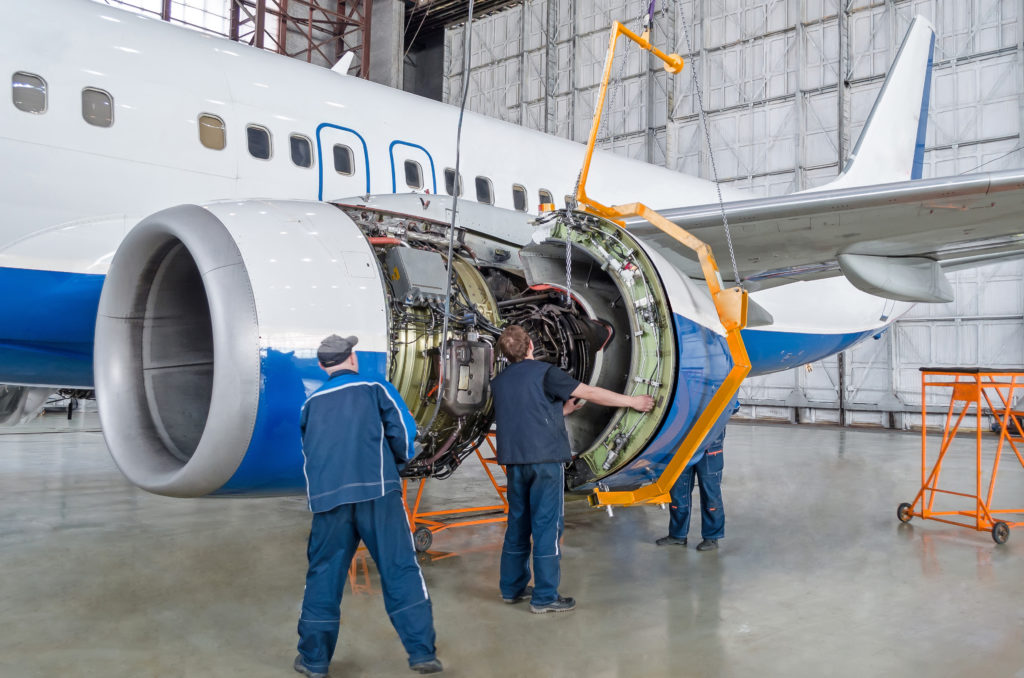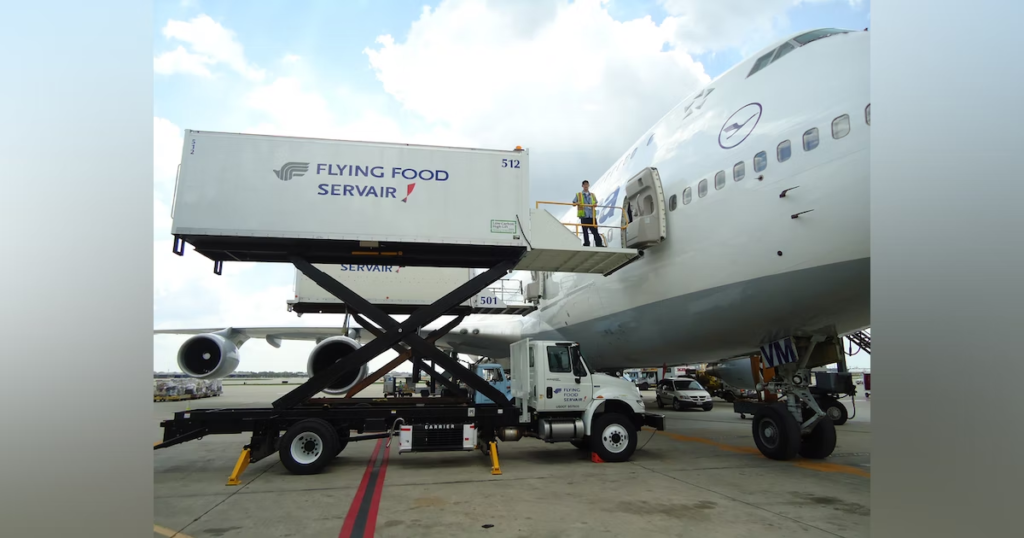Free Aerospace Design Quality Assurance Engineer course (6 months)
Aerospace Design Quality Assurance Engineer:

Brief Job Description of Aerospace Design Quality Assurance Engineer: Aerospace Design Quality
Assurance Engineer is responsible for monitoring each phase of the design process
to ensure that the designs adhere to the standards as required by the customer.
Personal Attributes: The individual should have analytical ability, attention to detail
and systematic thought process. He should have good communication
and interpersonal skills and should be able to work as part of a team.

Create documents for knowledge sharing:
Performance Criteria in Aerospace Design Quality Assurance Engineer:
PC1. establish with appropriate people the purpose, scope, formats and target
audience for the documents of Aerospace Design Quality Assurance Engineer.
PC2. access existing documents, language standards, templates and
documentation tools from your organization’s knowledge base
PC3. liaise with appropriate people to obtain and verify the information required
for the documents in Aerospace Design Quality Assurance Engineer.
PC4. confirm the content and structure of the documents with appropriate people
PC5. create documents using standard templates and agreed language standards
PC6. review documents with appropriate people and incorporate their inputs
PC7. submit documents for approval by appropriate people
PC8. publish documents in agreed formats Aerospace Design Quality
PC9. update your organization’s knowledge base with the documents
PC10. comply with your organization’s policies, procedures and guidelines when
creating documents for knowledge sharing
Knowledge and Understanding:

Organisational Context Aerospace Design Quality Assurance Engineer:
KA1. your organization’s policies, procedures and guidelines for creating documents for knowledge sharing
KA2. the purpose and scope of the work to be carried out and the importance of keeping within these boundaries
KA3. who to involve when developing documents and their roles and
responsibilities of Aerospace Design Quality Assurance Engineer
KA4. intended audiences for documents Aerospace Design Quality
KA5. your organization’s knowledge base and how to access and update this
KA6. the importance of verifying information obtained for documents and how to
do this in Aerospace Design Quality Assurance Engineer
KA7. the importance of reviewing documents with others
KA8. how to use feedback to improve documents Aerospace Design Quality
KA9. your organization’s processes and procedures for approving and publishing
documents Aerospace Design Aerospace Design Quality
KA10. methods and techniques used when working with others
KA11. tools, templates and language standards available and how to use these
KA12. the work element for documents created in Aerospace Design Quality Assurance Engineer.
KA13. how to convert the work element into meaningful documents by proper
abstraction and categories suited to standard templates
Technical Aerospace Design
Knowledge of Aerospace Design Quality Assurance Engineer:
KB1. the purpose and scope of the work to be carried out and the importance of
keeping within these boundaries
KB2. sources of information and reference materials for creating documents
KB3. different styles used in documents, including:
your organization’s house style
types and styles of documents
templates
KB4. different ways of structuring documents and how to select the best structure
for the agreed content
KB5. how to check and make corrections to documents for common editorial
problems and errors, including:
deviations
factual accuracies
linguistic mistakes
discrepancies
errors
ambiguities in content
formatting Aerospace Design
KB6. the importance of obtaining approval for documents and who to obtain this from
KB7. change management procedures, including version control and approvals
KB8. how to use document preparation tools including Word, Visio, PowerPoint,
Excel
Aerospace Design

Core Skills/ Generic Skills of Aerospace Design Quality Assurance Engineer:
Aerospace Design
| Writing Skills |
| You need to know and understand how to: SA1. complete accurate well written work with attention to detail SA2. communicate with others in writing |
| Reading Skills |
| You need to know and understand how to: SA3. follow guidelines, procedures, rules and service level agreements |
| Oral Communication (Listening and Speaking skills) |
| SA4. listen effectively and orally communicate information accurately SA5. ask for clarification and advice from others Professional Skills You need to know and understand how to: SB1. identify anomalies in data SB2. make a decision on a suitable course of action SB3. time management SB4. multi-tasking Plan and Organise You need to know and understand how to: SB5. plan and organize your work to achieve targets and deadlines SB6. manage your time effectively SB7. handle multiple tasks concurrently Customer Centricity You need to know and understand how to: SB8. check that your own and/or your peers’ work meets customer requirements SB9. work effectively in a customer facing environment SB10. build and maintain positive and effective relationships with customers Problem Solving: You need to know and understand how to: SB11. seek clarification on problems from others SB12. apply problem-solving approaches in different situations SB13. refer anomalies to the line manager Analytical Skills You need to know and understand how to: SB14. analyze data and activities SB15. configure data and disseminate relevant information to others SB16. pass on relevant information to others Critical Thinking Skills You need to know and understand how to: SB17. provide opinions on work in a detailed and constructive way SB18. apply balanced judgments to different situations Attention to Detail You need to know and understand how to: SB19. check your work is complete and free from errors SB20. get your work checked by others Problem Solving: You need to know and understand how to: SB11. seek clarification on problems from others SB12. apply problem-solving approaches in different situations SB13. refer anomalies to the line manager Analytical Skills You need to know and understand how to: SB14. analyze data and activities SB15. configure data and disseminate relevant information to others SB16. pass on relevant information to others Critical Thinking Skills You need to know and understand how to: SB17. provide opinions on work in a detailed and constructive way SB18. apply balanced judgments to different situations Attention to Detail You need to know and understand how to: SB19. check your work is complete and free from errors SB20. get your work checked by others  Technical Skills SC1. use information technology effectively to input and/or extract data accurately SC2. identify and refer anomalies in data SC3. store and retrieve information SC4. keep data secure SC5. agree objectives and work requirements SC6. use coding standards SC7. keep up to date with changes, procedures and practices in your role Review and maintain design quality Performance Criteria of Aerospace Design Quality Assurance Engineer: create, maintain documents and provide information in standard format PC1. understand manufacturing standards and approve manufacturing drawings PC2. review documentation related to both internal and external manufacturing processes to ensure quality products PC3. conduct audits to ensure the appropriate level of quality and documentation in Aerospace Design Quality Assurance Engineer PC4. evaluate the design assurance activities and implementation of production process methodology to prevent impact on production speed and quality PC5. contribute towards creation of new standards PC6. approve designs with appropriate certification of quality PC7. develop and utilise lean initiatives to reduce wastage throughout design process and maintain continuous improvement PC8. perform and document audits on processes and procedures to ensure compliance to specifications, engineering designs and procedures of Aerospace Design Quality Assurance Engineer. PC9. develop and lead programme corrective action meetings, identify and assist in problem resolution to ensure responsible parties meet commitments PC10. develop, register and use problem analysis to proactively identify quality process solutions PC11. track quality assurance metrics /KPI’s like defect counts with causes and implement corrective actions Knowledge and Understanding Organisational Context KA1. organisation’s objective, vision, diversified segments, products etc KA2. regulatory compliance with respect to modification and changes KA3. organisation’s requirement for IP protection KA4. hazard and risk management as defined by organisation KA5. compliance requirement for the roles and responsibility KA6. organisation’s safety and security requirements KA7.organisational safety requirements such as Occupational Health and Safety Assessment Series (OHSAS) etc. Technical Knowledge KB1. standards, codes, best practices and policy such as Six Sigma etc KB2. certification for standard quality such as Green Belt, Black Belt etc., KB3. quality assurance plan for optimum quality of design KB4. aerospace design and theory of flight KB5. aerospace standards such as AS9100, EN9100 etc Core Skills/ Generic Skills Writing Skills The user/individual on the job needs to know and understand how to: SA1. complete accurately, a well written report, in the English language detailing situations of emergency with attention to detail Reading Skills The user/individual on the job needs to know and understand how to: SA2. read instructions/guidelines/procedures/rules Oral Communication (Listening and Speaking skills) The user/individual on the job needs to know and understand how to: SA3. listen to and orally communicate information with all concerned Professional Skills Decision Making The user/individual on the job needs to know and understand how to: SB1. make decisions on a suitable course of action or response if permitted by the authority matrix Plan and Organise The user/individual on the job needs to know and understand how to: SB2. monitor efficient functioning of all activities SB3. plan and organise work to achieve targets and deadlines Customer Centricity The user/individual on the job needs to know and understand how to: SB4. communicate with customers and other stakeholders in a courteous manner SB5. maintain cordial work relationship Problem Solving The user/individual on the job needs to know and understand how to: SB6. identify trends/common causes for errors and suggest possible solutions to the supe rvisor/management SB7. identify and correct errors Analytical Skills The user/individual on the job needs to know and understand how to: SB8. analyse best possible solutions (cost, time, effort, etc.) suited for operations Critical Thinking Skills SB9. concentrate on task at hand and complete it without errors SB10. apply balanced judgments to different situations  Work Effectively in a team Performance Criteria Support the work team PC1. display courteous and helpful behaviour at all times PC2. take opportunities to enhance the level of assistance offered to colleagues PC3. meet all reasonable requests for assistance within acceptable workplace timeframes PC4. complete allocated tasks as assigned PC5. seek assistance when difficulties arise PC6. use questioning techniques to clarify instructions or responsibilities, PC7. identify and display a non-discriminatory attitude in all contacts with customers and other staff members Maintain personal presentation PC8. observe appropriate dress code and presentation as required by the workplace, job role and level of customer contact PC9. follow personal hygiene procedures according to organisational policy Develop effective work habits PC10. interpret, confirm and act on workplace information, instructions and procedures relevant to the particular task PC11. interpret, confirm and act on legal requirements with regards to anti-discrimination, sexual harassment and bullying PC12. ask questions to seek and clarify workplace information PC13. plan and organise daily work routine within the scope of the job role PC14. prioritise and complete tasks according to required timeframes PC15. identify work and personal priorities and achieve a balance between competing priorities in Aerospace Design Quality Assurance Engineer Knowledge and Understanding Organisational Context KA1. policies and procedures relating to the job role KA2. the value system of the organisation KA3. employee rights and obligations KA4. the reporting hierarchy and escalation matrix Technical Knowledge KB1. ask questions to identify and confirm requirements KB2. follow routine instructions through clear and direct communication KB3. use language and concepts appropriate to cultural differences KB4. use and interpret non-verbal communication KB5. the scope of information or materials required within the parameters of the job role KB6. consequences of poor team participation on job outcomes KB7. work health and safety requirements Core Skills/ Generic Skills Writing Skills, On the job the individual needs to be able to: SA1. complete documentation accurately SA2. write simple reports when required Reading Skills On the job the individual needs to be able to: SA3. read information accurately SA4. read and interpret data sheets Oral Communication (Listening and Speaking skills) The user/individual on the job needs to know and understand how to: SA5. listen to and orally communicate information with all concerned Professional Skills Decision Making On the job the individual needs to be able to: SB1. make appropriate decisions regarding the responsibilities of the job role Plan and Organise The user/individual on the job needs to know and understand how to: SB2. monitor efficient functioning of all activities SB3. plan and organise work to achieve targets and deadlines Customer Centricity The user/individual on the job needs to know and understand how to: SB4. communicate with customers and other stakeholders in a courteous manner SB5. maintain effective work relationship Problem Solving The user/individual on the job needs to know and understand how to: SB6. identify trends/common causes for errors and suggest possible solutions to the supervisor / management SB7. identify and correct errors Analytical Thinking The user/individual on the job needs to know and understand how to: SB8. analyse best possible solutions (cost, time, effort, etc.) suited for operations Critical Thinking The user/individual on the job needs to know and understand how to: SB9. concentrate on task at hand and complete it without errors SB10. apply balanced judgments to different situations Maintain organisational safety and information security Performance Criteria Comprehending the safety and information security procedures PC1. comply with your organization’s IT policies and procedures for safety of data and information PC2. adhere to the organisation’s policies pertaining to accesses granted, usage, modification of any information or recording or destruction of information PC3. report any identified breaches of data or information in any form to the authority as described by the organisation PC4. report any theft of intellectual property according to the organisation policy PC5. record, control the document version and take appropriate approvals for the documents, plans or drawings according to organisational hierarchy PC6. follow your organization’s safety procedures at workplace and act promptly, calmly, and efficiently in case of disruption PC7. recommend improvement related to safety and security at the workplace PC8. comply to any health and safety requirements set by an organisation Knowledge and Understanding Organisational Context KA1. regulatory requirements and organization’s procedures for health, safety and information security KA2. what is meant by an Intellectual property (IP), including the identification and prevention of theft at workplace KA3. how and when to maintain version and document control, post seeking approvals from the competent organisational authority KA4. the 5S principles (Seiri, Seiton, Seiso, Seiketsu, and Shitsuke) for efficient productivity and quality at workplace Technical Knowledge KB1. IP management, including filing patents/copyrights/design registrations, documentation and control KB2. design standards, practices, procedure and methods followed by your organisation KB3. how to report breaches in safety and information security KB4. cyber security policy of your organisation KB5. procedures for evacuation of staff at workplace KB6. reporting procedures related to health, safety and security Core Skills/ Generic Skills Writing Skills You need to know and understand how to: SA1. complete accurate, well written work with attention to detail Reading Skills You need to know and understand how to: SA2. read instructions, guidelines, procedures, rules and service level agreements Oral Communication (Listening and Speaking skills) You need to know and understand how to: SA3. listen effectively and orally communicate information accurately Professional Skills Making You need to know and understand how to: SB1. make a decision on a suitable course of action You need to know and understand how to: SB2. plan and organize your work to meet health, safety and security requirements Customer Centricity You need to know and understand how to: SB3. build and maintain positive and effective relationships with colleagues and customers Problem Solving You need to know and understand how to: SB4. apply problem solving approaches in different situations Analytical Skills You need to know and understand how to: SB5. analyse data and activities Critical Thinking Skills You need to know and understand how to: SB6. apply balanced judgments to different situations Aerospace Design Quality Assurance Engineer Create documents for knowledge sharing · establish with appropriate people the purpose, scope, formats and target audience for the documents access existing documents, language standards, templates and documentation tools from the organization’s knowledge base liaise with appropriate people to obtain and verify the information required for the documents confirm the content and structure of the documents with appropriate people create documents using standard templates and agreed language standards review documents with appropriate people and incorporate their inputs submit documents for approval by appropriate people publish documents in agreed formats update the organization’s knowledge base with the documents comply with the organization’s policies, procedures and guidelines when creating documents for knowledge sharing Review and maintain design quality understand manufacturing standards and approve manufacturing drawings review documentation related to both internal and external manufacturing processes to ensure quality products conduct audits to ensure the appropriate level of quality and documentation evaluate the design assurance activities and implementation of production process methodology to prevent impact on production speed and quality contribute towards creation of new standards approve designs with appropriate certification of quality develop and utilise lean initiatives to reduce wastage throughout design process and maintain continuous improvement perform and document audits on processes and procedures to ensure compliance to specifications, engineering designs and procedures develop and lead programme corrective action meetings, identify and assist in problem resolution to ensure responsible parties meet commitments develop, register and use problem analysis to proactively identify quality process solutions track quality assurance metrics /KPI’s like defect counts with causes and implement corrective actions Work Effectively in a Team display courteous and helpful behaviour at all times take opportunities to enhance the level of assistance offered to colleagues meet all reasonable requests for assistance within acceptable workplace timeframes complete allocated tasks as required seek assistance when difficulties arise use questioning techniques to clarify instructions or responsibilities identify and display a non -discriminatory attitude in all contacts with customers and other staff members observe appropriate dress code and presentation as required by the workplace, job role and level of customer contact follow personal hygiene procedures according to organisational policy and relevant legislation interpret, confirm and act on workplace information, instructions and procedures relevant to the particular task · interpret, confirm and act on legal requirements in regard to anti- discrimination, sexual harassment and bullying ask questions to seek and clarify workplace information plan and organise daily work routine within the scope of the job role prioritise and complete tasks according to required timeframes identify work and personal priorities and achieve a balance between competing priorities Maintain organisational safety and information security comply with the organization’s IT policies and procedures for safety of data and information adhere to the organisation’s policies pertaining to accesses granted, usage, modification of any information or recording or destruction of information report any identified breaches of data or information in any form to the authority as described by the organization report any theft of intellectual property according to the organisation policy record, control the document version and take appropriate approvals for the documents, plans or drawings according to organisational hierarchy follow your organization’s safety procedures at workplace and act promptly, calmly, and efficiently in case of disruption recommend improvement related to safety and security at the workplace comply to any health and safety requirements set by an organisation Unique equipment used Computer Aided Design tools (software) PLM Tool (software) Design Quality Assurance tools/Software Guidelines for Assessment 1. Criteria for assessment for each Qualification Pack will be created by the Sector Skill Council. Each Performance Criteria (PC) will be assigned marks proportional to its importance in NOS. SSC will also lay down proportion of marks for Theory and Skills Practical for each PC. 2. The assessment for the theory part will be based on knowledge bank of questions created by the SSC. 3. Assessment will be conducted for all compulsory NOS, and where applicable, on the selected elective/option NOS/set of NOS. 4. Individual assessment agencies will create unique question papers for theory part for each candidate at each examination/training center (as per assessment criteria below). 5. Individual assessment agencies will create unique evaluations for skill practical for every student at each examination/training center based on this criterion. 6. To pass the Qualification Pack, every trainee should score a minimum of 70% of aggregate marks to successfully clear the assessment. 7. In case of unsuccessful completion, the trainee may seek reassessment on the Qualification Pack. |
Toggle panel: Page Settings
OneSignal Push Notifications
Toggle panel: OneSignal Push Notifications Send notification on post update
Customize notification content
Ultimate Member: Content Restriction
Toggle panel: Ultimate Member: Content Restriction
| Restrict access to this post? |
|---|
Rank MathGeneral
Free Aerospace Design Quality Assurance Engineer course…
This course is totally free of cost by Government, admission is open in Rita Charitable Trust.You can take admission in Free Aerospace Design Quality…Edit Snippet
Focus Keyword
Aerospace Design Quality
Want more? Upgrade today to the PRO version.This post is Pillar Content
Basic SEOAll Good
- Hurray! You’re using Focus Keyword in the SEO Title.
- Focus Keyword used inside SEO Meta Description.
- Focus Keyword used in the URL.
- Focus Keyword appears in the first 10% of the content.
- Focus Keyword found in the content.
- Content is 3377 words long. Good job!
Additional3 Errors
- Focus Keyword found in the subheading(s).
- Focus Keyword found in image alt attribute(s).
- Keyword Density is 0.62, the Focus Keyword and combination appears 21 times.
- URL is 67 characters long. Kudos!
- No outbound links were found. Link out to external resources.
- We found 0 outbound links in your content and all of them are nofollow.
- You are linking to other resources on your website which is great.
- You haven’t used this Focus Keyword before.








